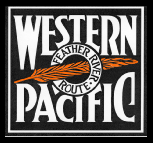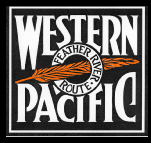



In 1996 my wife Norma and I built a new home on acreage we had left over from land I had subdivided over the years. From the initial design, the layout was part of the planning process. A site was chosen that would allow a basement, which is rare in California. The track plan and house plan were developed together which works out very well in that when the kitchen needs to be larger, guess what happens to the layout room beneath it!
1800 square feet of dedicated floor space was allotted to the railroad
During the construction of the house the layout plan was reviewed by everyone I could find that would help. Many changes were made during that time. Since there was no house, there was no pressure to start layout construction!
As the inspector drove away, construction of the train room and layout commenced. We are 17 years into the project. The railroad was designed for operation and operations started as soon as there was enough track laid to do so!
The layout is my representation of the Western Pacific Railroad, running from Oakland on the west coast of California to Salt Lake City in Utah. There are branches to Reno and to Turlock (the Tidewater Southern). Also modeled is the Highline which ran from Keddie to Bieber California. This was the WP’s connection to the great north west via the Great Northern Railroad.
Scale HO
Track is code 80 on the main and code 70 in the yards
Turnouts are Atlas #6 and Peco code 75
The railroad is dispatched using full CTC two color signaling. All mainline turnouts are controlled by the dispatcher. This is all accomplished with the Bruce Chubb “Computer/Model Railroad Interface”. A separate program can be run when a dispatcher is not available, then all turnouts are thrown from the fascia and the signals are automatic, based on occupation and direction of travel. There are also 2 sets of block signals that are 3 color. The use of 3 color signals requires twice as many output bits, so I only did the block signals this way.
We use a simple computer-
Operation sessions are held every other Thursday evening, (rotating with John Zach’s Sierra Railroad) from 7pm until about 11pm. We also host out of town groups on weekends as needed.
Construction is complete on the Salt Lake area. All the unit trains now are self-
Reno is currently under construction. San Francisco is also now complete providing additional traffic. Over the years additional spurs have been added as needed to add additional operation.